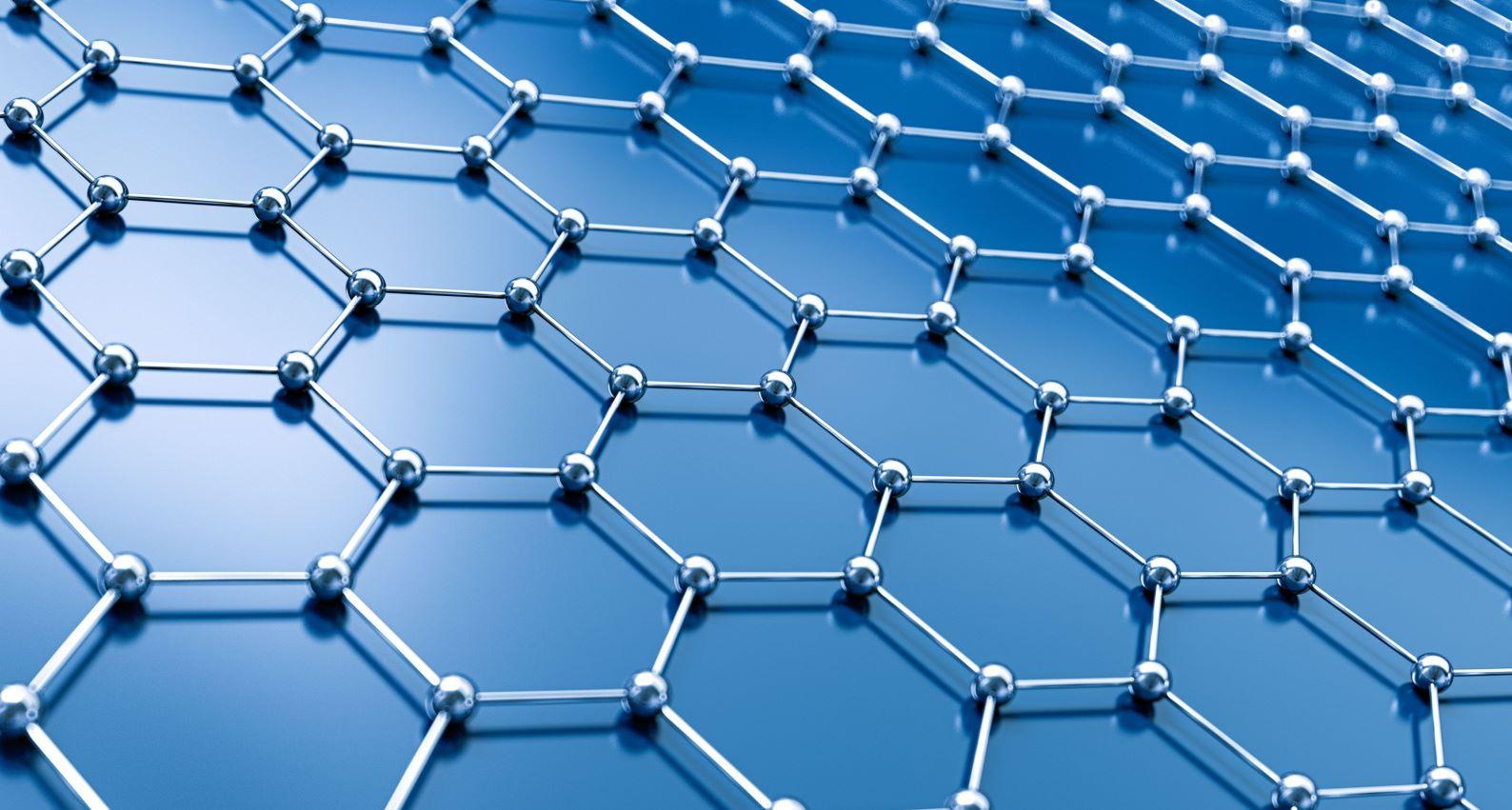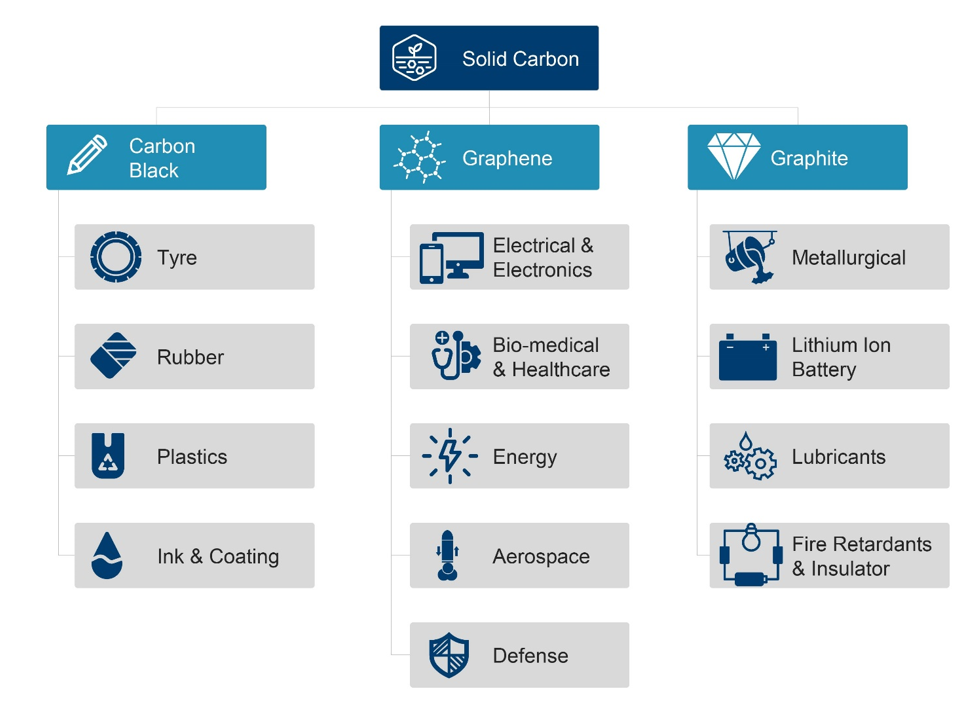An Alternate Revenue Stream from Decarbonisation Techniques
Published on 18 Dec, 2023

Most industries are now moving towards “reducing CO2 emissions and targeting to become carbon neutral by 2050”. Companies have already set sustainability targets to reduce CO2 emissions. Methane processing techniques are being evaluated as a potential decarbonisation process compared with commercially available CCS/CCU techniques. These techniques decarbonise natural gas and form a feasible business case for companies adopting it, as hydrogen produced can be re-titrated to natural gas stream to achieve up to 100% sequestration of carbon content and solid carbon (carbon black/graphene) produced can be traded in various end-use industries, including tyre, construction, and ink & coating industries.
Carbon black is a mature and low-priced market ($1-2/kg) with the tyre industry contributing to >70% of the demand. While graphene is a high price point market ($100-1,000/kg), the actual demand of graphene is still optimistic and highly dependent upon the mass adoption by major end-use applications such as cement, concrete, etc.
Type of Methane Processing Techniques and Their End Products
The waste stream of methane is connected to the reactor of a methane processing technology. The gas flows into the reactor where it is exposed to temperature and other conditions in presence of energy that triggers a chemical reaction, converting methane molecules into hydrogen gas and carbon products.

There are multiple technology providers available majorly across the US and Europe that provide methane processing technologies to decarbonise natural gas. A few APAC countries, such as Japan, South Korea and Australia (having significant reserves of natural gas), also have ambitious decarbonisation goals and are actively adopting methane pyrolysis. Technology providers, such as Ekona Power, offer a system of 200-kilogram-H2-per-day to demonstrate hydrogen and carbon production from natural gas feedstock.
The different types of methane processing technologies and their end products are:
Type of Methane Processing Technology |
Additional Output |
|---|---|
Pyrolysis – Catalytic |
Hydrogen and Solid Carbon (Graphite / Carbon Black) |
Pyrolysis – Thermal |
Hydrogen and Solid Carbon (Carbon Black) |
Pyrolysis – Plasma Torch |
Hydrogen and Solid Carbon (Carbon Black) |
Microwave Plasma |
Hydrogen and Solid Carbon (Graphene) |
Solid carbon (Carbon Black, Graphene, Graphite) produced by methane processing technologies represents a significant commercial opportunity in existing and emerging global markets where solid carbon, as a co-product, adds economic and environmental value, not cost, to the bottom line.
Current Supply Scenario for Carbon Black and Graphene from Methane Pyrolysis Technologies
Carbon Black
Currently, methane processing technology accounts for <0.1% of the current global production of carbon black. Monolith is the only technology provider that has commissioned a methane pyrolysis unit on a commercial scale in the US to convert natural gas into clean hydrogen and carbon black. In 2020, the company collaborated with MHI to manufacture carbon black from methane pyrolysis. The company is currently operating its first commercial-scale production facility in Hallam, Nebraska, the US, with a production facility of 14,000 MT of carbon black. In addition, Monolith is expanding carbon black production by 194,000 MT, which would come online by 2025.
Future Scenario: By 2025, >1% of carbon black is expected to be produced by methane processing technologies. The adoption is expected to increase due to high CO2 taxes on traditional carbon black producing methods.
Graphene
Graphene is produced using multiple processes, including Exfoliation, Chemical Vapour, Deposition, Epitaxial Growth and Methane Processing. End-use industries are in the process of exploring the opportunity to source graphene produced by methane processing. Technology providers, such as Levidian, provide solutions for decarbonising methane and producing graphene as a byproduct.
Increasing Demand Across End Use Industries

Carbon Black
The global carbon black market is majorly dominated by the tyre industry. It is the largest consumer of carbon black, contributing to ~70% of the total demand.
Other than tyres, growing demand from the fibre and textile industry, as carbon black is used as a colouring agent in the production of synthetic fibres. Further, carbon black provides flexibility and strength to industrial products such as gaskets, conveyor belts, air springs and hoses.
Increase in specialty carbon black demand has encouraged traditional carbon black suppliers to shift their production for this material.
Graphene
Current graphene demand is relatively low versus carbon black, as end-use markets are still in the process of understanding its potential use in their products. Although graphene has been scientifically proven to be used in multiple applications such as cement, concrete, rubber, elastomers and PVC, commercial demand for graphene is not expected to be significant until 2025.
In the optimistic scenario, if graphene’s mass adoption in bulk commodities such as cement and concrete materialises, then graphene demand may reach >2 million MT by 2030.
Pricing Analysis
Carbon Black
In 2022, the average price of carbon black was $1-2/kg. The price is expected to slightly increase in the next one year, driven by increased demand from the automotive and rubber industries, partially offset by a rise in supply.
Graphene
Typically, the price of graphene manufactured with a chemical exfoliation process varies from $100-1,000/kg depending upon the type of manufacturing process, surface area and particle size. The higher the surface area, the higher the price.
Prices of graphene are expected to remain on the higher side as the methods of producing graphene are still not cost effective. However, due to the expected increase in demand for graphene, companies are in the process of developing cost-effective methods of producing good-quality graphene.
Conclusion
Most industries are now moving towards “reducing CO2 emissions and target to become carbon neutral by 2050”. Companies across the globe have already set sustainability targets to reduce CO2 emissions. Therefore, an expected increase in adoption of methane processing techniques for the decarbonisation of natural gas to reduce CO2 emissions. In addition to 90-95% CO2 sequestration, these techniques provide an alternate revenue stream based on the end products (graphene/carbon black), resulting in yearly revenue and reduced payback period.
